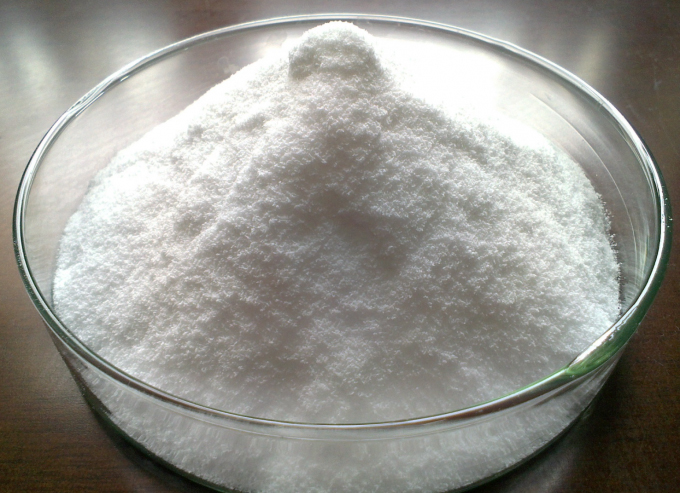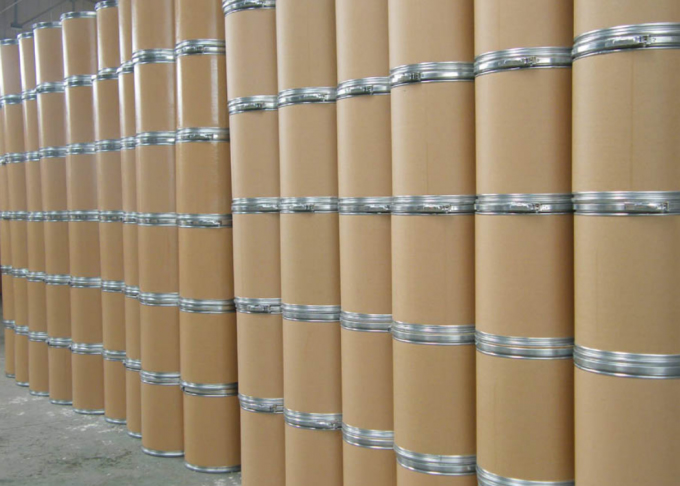Current location: Home > Products > Tetrafluorophenyl Borate
Purity 98% 2 3 4 5 6 Pentafluorophenyl Borane CAS No 1109-15-5
Product Details
Mat no.10011001 Tris(2,3,4,5,6-pentafluorophenyl)borane CAS No.1109-15-5 White to light yellow Powder Purity 98%
Basic information of Tris(2,3,4,5,6-pentafluorophenyl)borane
| English synonyms | PERFLUOROTRIPHENYLBORANE ; TRIS(PENTAFLUOROPHENYL)BORANE ; TRIS(PENTAFLUOROPHENYL)BORON ; Tris(2,3,4,5,6-pentafluorophenyl)borane ; TRIS(PENTAFLUOROPHENYL)BORANE SOLUTION, ~3% IN ISOPAR TORRIS,HENENTBOLUTION, ~3% IN ISOPAR ; TORRIS(PENTAFLUOROPHENYL) +% ; Tris(Pentafluorophenyl)Borate ; Tris(pentafluorophenyl)boron,min.97% |
| CAS No. | 1109-15-5 |
| Molecular formula | C18BF15 |
| Molecular weight | 511.98 |
Tris(2,3,4,5,6-pentafluorophenyl)borane properties
| Melting point | 126-131 °C (lit.) |
| Boiling point | 327.3±42.0 °C(Predicted) |
| density | 0.73 g/mL at 20 °C |
| Refractive index | n20/D 1.41 |
| Flash point | 7 °C |
| Storage conditions | Inert atmosphere,Store in freezer, under -20°C |
| Solubility | Soluble in hexane, chloroform, dichloromethane, toluene, and polar solvents. |
| form | Powder |
| color | White to light yellow-beige |
| proportion | 1.7 |
| Maximum wavelength (λmax) | 306nm(Toluene)(lit.) |
| Sensitivity | Moisture Sensitive |
| Hydrolysis sensitivity | 4: no reaction with water under neutral conditions |
| Merck | 14,9755 |
| BRN | 2931347 |
Use and production method of Tris(2,3,4,5,6-pentafluorophenyl)borane
| Introduction | Trans (pentafluorophenyl) boron is also called tris (pentafluorophenyl) borane. Compared with traditional Lewis acid, it has the advantages of stable chemical properties, strong acidity and convenient use. It is called non-traditional Lewis chemical Book acid. The application field of trans (pentafluorophenyl) boron has developed from the initial olefin polymerization Co catalyst to other fields of organic chemistry and polymer chemistry. The reaction catalyzed by tris (pentafluorophenyl) borane is very different from that catalyzed by traditional Lewis acid in reaction mechanism and reaction results. |
| use |
Common reagents are used to prepare d0 aromatics and other organometallic complexes, as well as polymerization catalysts. |
| Production method | After adding pentafluorobromobenzene (0.09mol, 22.2g) into a three port bottle (250ml), add 2 ‑ methyltetrahydrofuran (100ml). N ‑ Buli (2.5m, 0.09mol, 36ml) was added dropwise at 25 ℃. After 6.0h of reaction, trimethyl borate (0.03mol, 3.1g) was added dropwise at 25 ℃ for 10min. After 16 chemicalbookh at 25 ℃, the reaction was monitored by GC. Pour the reaction solution into water, extract it with 2 ‑ methyltetrahydrofuran twice, combine the organic layer, wash it with water twice, wash it with saturated salt water once, dry the organic layer with sodium sulfate, evaporate 2 ‑ methyltetrahydrofuran under reduced pressure, and recover 2 ‑ methyltetrahydrofuran to obtain crude product. Recrystallize with n-hexane to obtain trans (pentafluorobenzene) boron (0.0049mol, 2.48g), with a yield of 16.2%. |
Security Information
| Dangerous Goods Sign | Xi,T,N,Xn,F |
| Dangerous goods transport number | UN 1268 3/PG 2 |
| WGK Germany | 3 |
| TSCA | No |
| HazardClass | 6.1 |
| HS code | 29039990 |


Contact Us
Address:
Email:
Phone: